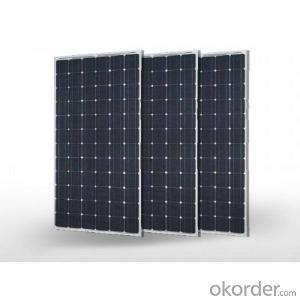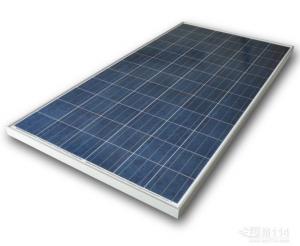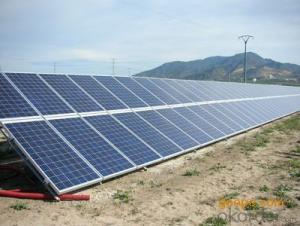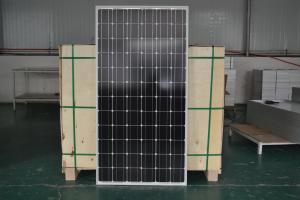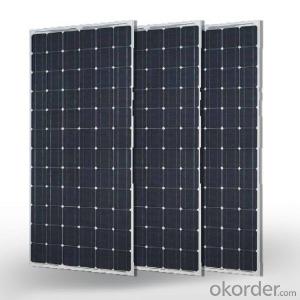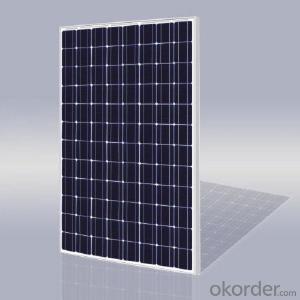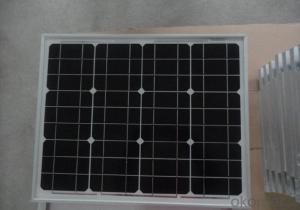Ureco Solar Panels - Mono Solar Panels 250W Solar Panel Kits for Sale
- Loading Port:
- Tianjin
- Payment Terms:
- TT OR LC
- Min Order Qty:
- 2500 watt
- Supply Capability:
- 15000 watt/month
OKorder Service Pledge
OKorder Financial Service
You Might Also Like
Specification
1.Structure of Monocrystalline Solar Module for 250W Series Description:
Monocrystalline Solar Module for M125-15W
High efficiency crystalline solar cell. Even if under the weak light, the solar module can produce maximum power output.
II Tempered glass (toughened glass): Anti-reflecting coating and high transmission rate glass increase the power output and mechanical strength of solar module.
III EVA and TPT: Using high quality EVA and TPT to prevent destroying and water.
IV AI frame: Without screw, rner connection. 6 holes on the frame can be installed easily.
V Junction box: Multi function junction box with water proof.
VI Long lifetime: ≥25 years; Less power decrease.
VII Good performance of preventing from atrocious weather such as wind and hails.
VIII Resisting moisture and etching effectively, not effected by geology.
IX The certificate issued by international authority: UL, TUV, IEC, CE.
2. Standard Test Conditions of Monocrystalline Silicon Solar Panel:
The opto-electrical specifications shown below are stabilized values being measured at Standard Test Conditions, Irradiance: 1000W/m2, Spectrum: AM1.5 at 25°C, The info below is subject to manufacturing tolerances. Where appropriate minutes of measurement are available and are used for the dimensioning of the installation.
Advantages of Monocrystalline Silicon Solar Panel
• CNBM Solar performance guarantees for 25 years
• 12 years guarantee for workmanship
• Timeliness of delivery
• Quality Products certified (TÜV, UL, CE, ISO)

PERFORMANCE
- High effi ciency, multicrystalline silicon solar cells with high transmission and textured glass deliver a module effi ciency of up to 16.0%,
minimizing installation costs and maximizing the kWh output of your system per unit area.
- Tight positive power tolerance of 0W to +5W ensures you receive modules at or above nameplate power and contributes to minimizing
module mismatch losses leading to improved system yield.
RELIABILITY
- Tests by independent laboratories prove that Solar modules:
Fully conform to certifi cation and regulatory standards.
Withstand wind loads of up to 2.4kPa and snow loads of up to 5.4kPa, confi rming mechanical stability.
Successfully endure ammonia and salt-mist exposure at the highest severity level, ensuring their performance in adverse conditions.

- Q: I'm curious to know if the small solar panels on a calculator (ie TI-32) could produce a voltage similar to what is used in a single-use (disposable) camera, approximately 4V.
- It isn't Volts that matter if you're trying to put the calculator solar panel on the camera. It would be the amps. The calculator's solar panel will put out however many volts or very close to what the battery puts out. If you want you can test it out with a Volt/Ammeter. You see, those cameras use 2 double A batteries. They are going to put out a higher current than the small dime shaped battery in the back of your calculator; a higher voltage perhaps too. Those disposable cameras have a photo flash capacitor in them that has to charge. You can hear them charge up when you tell it to turn on the camera's flash. Sounds like a winding then the little orange light comes on. That light means the capacitor is charged. You SHOULDN'T be able to change out the batteries in the camera with a solar panel from a calculator without having to wait days for that flash capacitor to charge. Sorry. EDIT: HOWEVER, you can take multiple solar panels and wire them in a parallel circuit to get more current(amperes) or wire them in a series circuit to get a higher voltage. If you were to do this you could power whatever you wanted with them. Even your house if you were to get a rectifier to convert the power from DC to AC.
- Q: Hi. I have been looking into getting solar panals but I only want them for one room. See, we're expanding the house by adding a basement, the basement isn't going to be that big but we wanted to have solar energy for the basement only. Could anyone give me a rough estimate on the cost of solar panals for my basement?
- If you're really planning on solar energy, don't waste it on your own consumption. The Hydro company pays you for the energy you put back into the grid....the strange thing is, you buy the power back for less than you sold it, so you actually profit on the power you make! look into this. I wired a nice house for a doctor, and although I didnt supply the solar system, I learned of this concept there. The guy who installed her system charged her around $40,000.00 and the system would never be able to run any large portion of their home. They, of course sold the energy to the utility.
- Q: How does the snow cover get removed from the panels?
- Green energy magically makes the snow transparent. The more I learn about solar and wind, particularly selling excess power back to the utility, the less sense it makes. You'll have noticed, perhaps, that there was no way to store the power from the panels for when it's really needed.
- Q: is a wind turbine better than solar panels
- is your place has enough wind or sunshine ? the turbine is not easily for maintenance. the solar panel is more stable, one broken panel willl not affect the whole system much
- Q: If I wanted to put some solar panels on my roof, how many would i need and how many watts would they have to be to be able to power my whole house?
- Short answer - Don't worry about it. Just get as many as you can, but stay connected to the power grid. You'll sell the power company electricity when it's sunny and still have electricity at night. Long answer - You need to figure out how much electricity you use. Running an oven, air conditioner, hot water heater, and all that stuff at the same time uses a lot of power.
- Q: Can solar panels be installed on churches or religious institutions?
- Yes, solar panels can definitely be installed on churches or religious institutions. In fact, many religious organizations have embraced solar energy as a way to reduce their carbon footprint and promote sustainable practices. Installing solar panels on churches not only helps them save on electricity costs but also serves as a visible commitment to environmental stewardship and can inspire the community to adopt clean energy solutions.
- Q: I have:4- 5v 200ma solar panels5- 3v ,000ma solar panels- 7amp charge controller- 400watt inverterNow I have all my solar panels linked in series which in theory should give me 35v, 5.8 amps at 203 watts. Is this correct?The main question is, what kind of battery should I get so I can run my miscellaneous electronics off of it?I may not have explained it so well so if you need more information, feel free to ask.
- I okorder and they have deep cycle batteries exclusively made for solar panels. but in theory you should get more than one because it only takes around 4-5 volts to charge the battery and you do not want to have it that high even with a charge controller which i would also recommend getting which is like $50 on OKorder but a charge controller is used so you do not overcharge the batteries and fry them or undercharge the batteries and weaken its life it gets it just perfect. it lets the current go in and when it is charged fully nothing goes in an nothing comes out.... for a inverter the one i was going to get was $70 500 watt inverter but changes it from dc to ac...hope i helped
- Q: Can solar panels be installed on a shaded area?
- Solar panels are most effective when placed in direct sunlight, so installing them in a shaded area would significantly reduce their energy production. However, there are technologies available, such as bifacial solar panels or solar trackers, that can optimize energy generation in partially shaded areas.
- Q: Are solar panels suitable for residential use?
- Yes, solar panels are highly suitable for residential use. They are cost-effective, environmentally friendly, and can significantly reduce electricity bills. With advancements in technology and decreasing panel prices, solar panels have become an attractive option for homeowners to generate clean, renewable energy and contribute to a sustainable future.
- Q: Do solar panels require building permits?
- Yes, solar panels typically require building permits. The requirements for obtaining a building permit may vary based on location and jurisdiction. It is essential to check local regulations and obtain the necessary permits before installing solar panels.
Send your message to us
Ureco Solar Panels - Mono Solar Panels 250W Solar Panel Kits for Sale
- Loading Port:
- Tianjin
- Payment Terms:
- TT OR LC
- Min Order Qty:
- 2500 watt
- Supply Capability:
- 15000 watt/month
OKorder Service Pledge
OKorder Financial Service
Similar products
Hot products
Hot Searches
Related keywords

